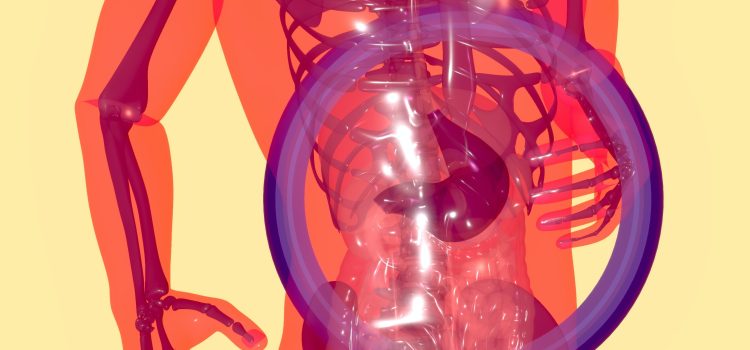
Living with fatty liver disease can be a challenging journey, but it doesn’t have to mean giving up on a healthy and fulfilling life. Whether you’ve been diagnosed with non-alcoholic fatty liver disease or alcoholic fatty liver disease, there are strategies you can adopt to manage your condition and improve your overall wellbeing. In this blog post, we’ll explore the different types of fatty liver disease, the symptoms to watch out for, and most importantly – practical tips for living with this condition while maintaining a healthier lifestyle!
What is Fatty Liver?
Fatty liver, also known as hepatic steatosis or fatty liver disease, is a condition where excess fat builds up in the liver. The presence of some fat in the liver is normal, but when it exceeds 5-10% of the organ’s weight, it can lead to inflammation and damage over time.
There are two main types of fatty liver disease – alcoholic and non-alcoholic. Alcoholic fatty liver disease occurs due to excessive alcohol consumption which leads to fat accumulation in the liver cells. Non-alcoholic fatty liver disease (NAFLD), on the other hand, is caused by factors such as obesity, insulin resistance and high blood sugar levels.
While NAFLD is generally considered less serious than alcoholic fatty liver disease, it can progress into more severe conditions like non-alcoholic steatohepatitis (NASH) or cirrhosis if left untreated.
If you suspect that you may have fatty liver disease or are experiencing any symptoms associated with this condition such as fatigue or abdominal discomfort. It’s essential to speak with your healthcare provider for proper diagnosis and treatment recommendations.
The Different Types of Fatty Liver
Fatty liver is a condition where excess fat builds up in the liver cells. There are two main types of fatty liver: alcoholic fatty liver disease and non-alcoholic fatty liver disease (NAFLD).
Alcoholic fatty liver disease occurs due to excessive alcohol consumption. When the liver breaks down alcohol, it produces toxic by-products that can damage the liver cells, leading to inflammation and scarring.
On the other hand, NAFLD occurs when there is an accumulation of fat in the liver cells without any significant alcohol consumption. This type of fatty liver can be caused by factors such as obesity, insulin resistance, high blood sugar levels or high levels of fats in the blood.
NAFLD can progress to a more serious form known as nonalcoholic steatohepatitis (NASH), which involves inflammation and damage to the liver tissue. NASH can further lead to cirrhosis or permanent scarring of the liver.
Understanding these different types of fatty livers is crucial for proper diagnosis and treatment. It’s important for individuals who have been diagnosed with a fatty-liver related condition to seek medical advice on how best to manage their health.
Causes of Fatty Liver
Fatty liver is a condition where excess fat accumulates in liver cells. This can be caused by a variety of factors, including alcohol consumption, obesity, and certain medical conditions.
Alcohol consumption is one of the most common causes of fatty liver disease. When you consume too much alcohol, your liver has to work harder to process it. Over time, this can lead to an accumulation of fat in the liver cells.
Obesity is another common cause of fatty liver disease. People who are overweight or obese are more likely to develop this condition because their bodies produce more insulin than necessary. This leads to an increase in the amount of fat stored in the body’s tissues, including the liver.
Certain medical conditions can also contribute to the development of fatty liver disease. These include diabetes and high levels of triglycerides in the blood. In some cases, medications such as steroids or chemotherapy drugs may also contribute to this condition.
There are many different factors that can lead to fatty liver disease. By making lifestyle changes such as reducing alcohol consumption and maintaining a healthy weight, it may be possible to prevent or even reverse this condition over time.
Symptoms of Fatty Liver
Fatty liver disease can be asymptomatic or present with mild to severe symptoms. The early stages of fatty liver might not show any noticeable symptoms, making it difficult to diagnose the condition. However, as the disease progresses and causes inflammation in the liver, you may experience several signs that indicate a need for medical attention.
One of these symptoms is fatigue, which is one of the most common complaints among individuals with fatty liver disease. You may feel tired and sluggish even after getting enough sleep or rest.
Another sign of fatty liver is abdominal discomfort such as pain or bloating in your belly area. This could be due to an enlarged liver pressing against other organs in your abdomen.
Jaundice is also a symptom that may occur when there’s significant damage to your liver cells. Jaundice causes yellowing of eyes and skin due to high levels of bilirubin in your blood.
Other signs include loss of appetite, weight loss without trying, weakness, confusion or memory problems as well as swelling in legs and ankles caused by fluid retention.
It’s essential to note that not all people with non-alcoholic fatty liver disease experience symptoms. Hence it’s advisable that if you have risk factors for developing this condition like obesity or diabetes talk to your doctor about screening tests regularly done even if you don’t exhibit any symptoms yet.
Coping Strategies for Living with Fatty Liver
Coping with fatty liver can be a challenge, but there are strategies you can implement to manage the condition and lead a healthier life. One of the most important things to do is maintain a healthy weight through regular exercise and a balanced diet that is low in fat.
Reducing your alcohol intake or abstaining altogether is also crucial for managing fatty liver. Alcohol consumption can exacerbate the condition and cause further damage to your liver. You should aim to drink no more than one alcoholic beverage per day if you choose to consume alcohol at all.
In addition, it’s important to monitor any medications or supplements you take as some may have adverse effects on your liver function. Always consult with your doctor before taking new medications or supplements.
Stress management techniques like meditation, deep breathing exercises, and yoga may also be beneficial in coping with fatty liver. Chronic stress has been linked to numerous health issues including inflammation which can worsen fatty liver disease.
Make sure you attend regular check-ups with your healthcare provider so they can monitor the progression of the disease and make any necessary adjustments to your treatment plan. With consistent effort towards managing this condition, it’s possible for individuals living with Fatty Liver Disease live fulfilling lives without complications!
Conclusion
Living with fatty liver can be challenging, but it’s important to remember that there are coping strategies and lifestyle changes you can make to improve your overall health. By understanding the different types of fatty liver, the causes and symptoms, you can take proactive steps towards a healthier life.
If you have been diagnosed with fatty liver disease or suspect that you may have it, make an appointment with your doctor as soon as possible. This is especially important if you experience any symptoms such as fatigue or abdominal pain.
From there, focus on making healthy lifestyle choices like exercising regularly and eating a balanced diet low in saturated fat and sugar. Avoid consuming alcohol or smoking cigarettes which further damages the liver.
It is also essential to maintain regular check-ups with your doctor so they can monitor your condition closely and determine whether additional treatment options are necessary.
Living with fatty liver may seem daunting at first, but by taking care of yourself both physically and mentally through proper nutrition, exercise routines & stress management techniques – one day at a time – we guarantee that this will become just another part of who we are!










